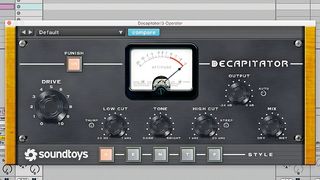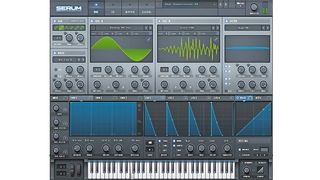7 unorthodox sound design ideas you might not have thought of
Trying something a little different in your sound design creation process can open the door to unexpected new techniques

If you're feeling stuck in a rut when it comes to producing original and unique sounds, it may well be time to start thinking outside the box.
With this collection of unorthodox sampling and synthesis tips and techniques, we'll get you back on track - even if it is the non-stop track to crazyville.
1. Extreme distortion
Take a ‘distortion synthesis’ approach to extremes by sculpting entirely new tones and timbres using only simple sounds and distortion. For example, push a pure sine wave into a distortion stage to square off the waveform, then vary the input gain with volume modulation (ie, tremolo) to create wavering waveform shifts.
2. Generate 'mistakes'
Sometimes it’s the sounds made by mistake that really inspire - so create hardware malfunctions on purpose!
Plug a cable into the wrong port to generate buzz or hum; crank up an empty mixer channel’s preamp gain to capture the amplified system noise; or pull a turntable’s needle off the record for scratches and pops. Record them all and use them in your sound design adventures!
3. Get the bends
Some of the best dance music basslines feature lip-curling pitchbends that add that special something - but drawing in specific bends via MIDI can be tedious. Instead, try and incorporate these movements at the sound design stage - create a cool bass patch in a synth, assign an LFO to global pitch, then print a bunch of live tweaks to audio as you alter the LFO’s speed.
Once recorded, chop up and save out the various sections, then throw them into a track at the composition stage to inspire clever bends and twists.
Get the MusicRadar Newsletter
Want all the hottest music and gear news, reviews, deals, features and more, direct to your inbox? Sign up here.

4. Break the rules
Music production advice often involves sweeping statements such as “watch your gain staging between plugins”, “Less is more”, and, “You can’t polish a…”. Well, although these statements are founded in truth, the most important quote of all is: “Rules are there to be broken”!
When you’re stuck for sound design inspiration, try breaking the rules! Overload plugins, stack up dozens of devices, and make it your mission to transform awful recordings into sonic gold.
5. Make an uber-sound
Max out your computer’s processing power by designing one single uber-sound! Stack up unison voices, go mental with modulation, and purposely assign everything to modulate everything. Once you’ve reached the limit of your computer’s processing power, resample the patch into a sampler and start the process again!
6. No ears!
Make music with your ears, not your eyes, right? Wrong! Fire up a synth’s initialised patch, turn off your speakers, then create an entire synth patch without listening to it!
You can plan how it will sound by choosing waveforms by eye, or go crazy and hook up random parameters. It’s worth a try if you’re completely stuck for inspiration!

7. Stick to one synth patch
Modern ‘power synths’ such as Xfer Records Serum and Spectrasonics Omnisphere 2 give you a flabbergasting amount of synthesis options. A good way to make use of all this potential is to try and create an entire drum groove - or even an entire track! - within the same synth patch.
For example, use Serum’s four LFOs as separate step sequencers to design an entire beat loop. Use a tight quarter-note LFO spike to trigger both volume and pitch modulation over Osc A’s sine wave for a kick; trigger the Noise oscillator with a rhythmic LFO 2 pattern for an intricate hi-hat groove; drop in a clap/snare on the 2 and 4 via Osc B and LFO 3; and use LFO 4 to create a simple bass via the sub oscillator.
Future Music is the number one magazine for today's producers. Packed with technique and technology we'll help you make great new music. All-access artist interviews, in-depth gear reviews, essential production tutorials and much more. Every marvellous monthly edition features reliable reviews of the latest and greatest hardware and software technology and techniques, unparalleled advice, in-depth interviews, sensational free samples and so much more to improve the experience and outcome of your music-making.

"If I wasn't recording albums every month, multiple albums, and I wasn't playing on everyone's songs, I wouldn't need any of this”: Travis Barker reveals his production tricks and gear in a new studio tour

“My management and agent have always tried to cover my back on the road”: Neil Young just axed premium gig tickets following advice from The Cure’s Robert Smith











